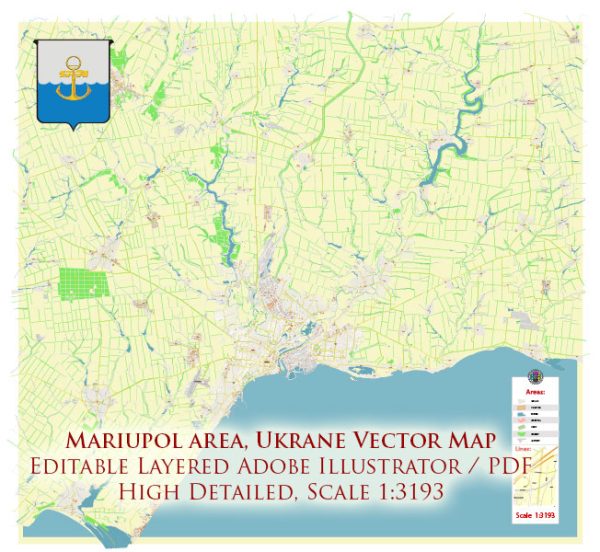Mariupol is a city located in southeastern Ukraine, on the northern coast of the Sea of Azov. It has a rich history that spans several centuries, and its development has been influenced by various empires, political changes, and economic activities. Here’s a brief description of the history of Mariupol:
- Early History: The area around Mariupol has a long history of human habitation, with evidence of settlements dating back to ancient times. It was inhabited by various peoples, including Scythians, Sarmatians, and Goths, over the centuries.
- Establishment of Mariupol: The modern history of Mariupol can be traced back to the late 18th century when the Russian Empire established the fortress of Pavlovsk to protect the southern borders of the empire. The fortress later became a town, and in 1778, it was officially named Mariupol in honor of Empress Maria, wife of Emperor Paul I.
- Industrial Development: During the 19th century, Mariupol saw significant industrial growth, particularly in steel and iron production. The city became an important center for metallurgy and trade, which led to its economic prosperity.
- World Wars: Mariupol, like many other Ukrainian cities, experienced the ravages of both World War I and World War II. During World War II, the city was occupied by Nazi forces before being liberated by the Red Army in 1943.
- Soviet Era: After World War II, Mariupol became part of the Ukrainian Soviet Socialist Republic within the Soviet Union. It continued to play a vital role in the Soviet steel industry.
- Post-Soviet Era: With the dissolution of the Soviet Union in 1991, Mariupol became part of an independent Ukraine. The city’s economy faced challenges during the transition to a market-based economy, but it retained its importance as an industrial center.
- Recent History: In the 21st century, Mariupol has faced political and security challenges, especially in the context of the conflict in Eastern Ukraine. The city has been located near the frontlines of the ongoing conflict between Ukrainian government forces and pro-Russian separatists.
Mariupol has a diverse population, with Ukrainians, Russians, and other ethnic groups living in the city. Its industrial base, particularly steel and metallurgy, continues to be a significant part of its economy. The city also has a vibrant cultural scene and is known for its music, arts, and festivals.


 Author: Kirill Shrayber, Ph.D.
Author: Kirill Shrayber, Ph.D.